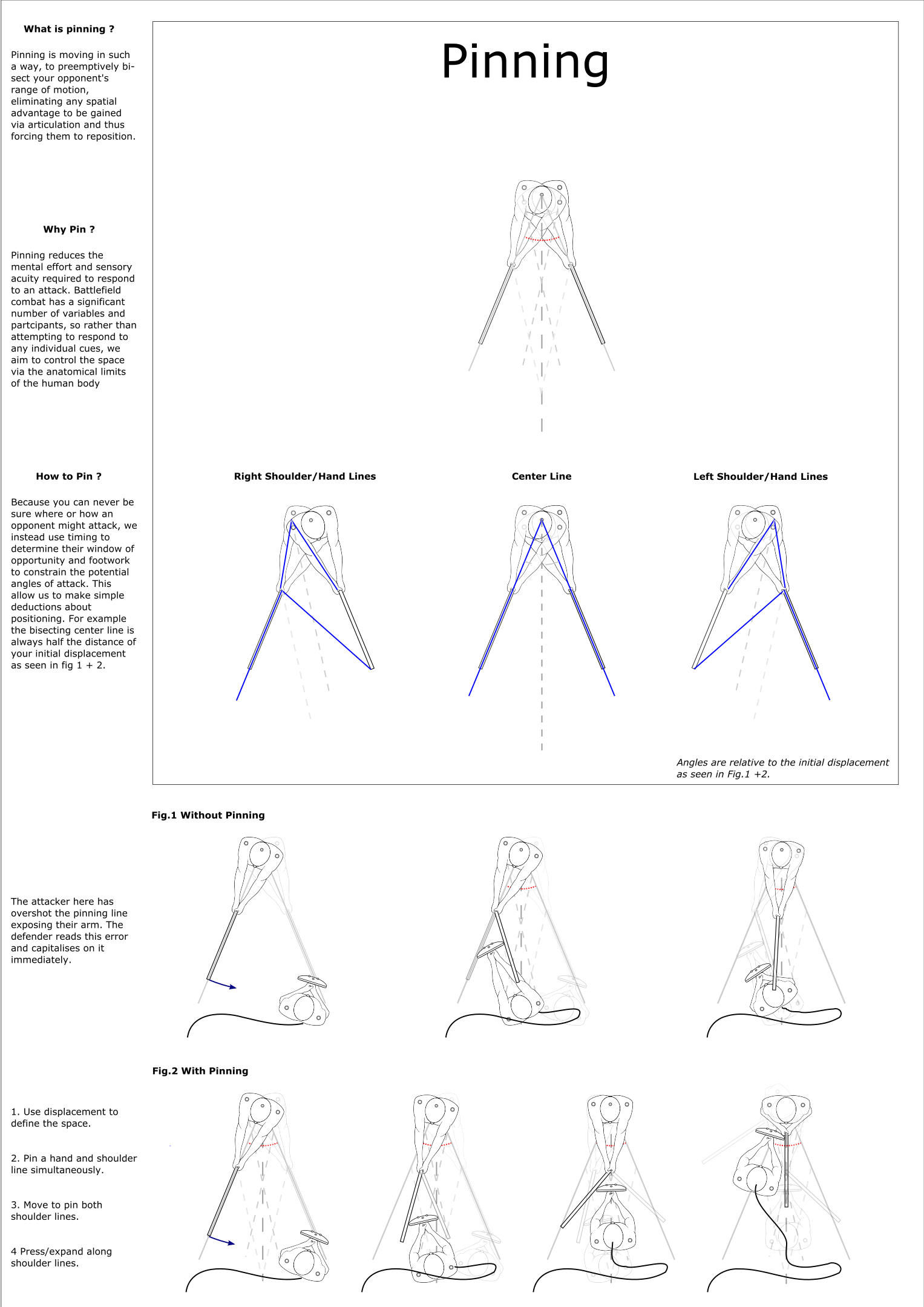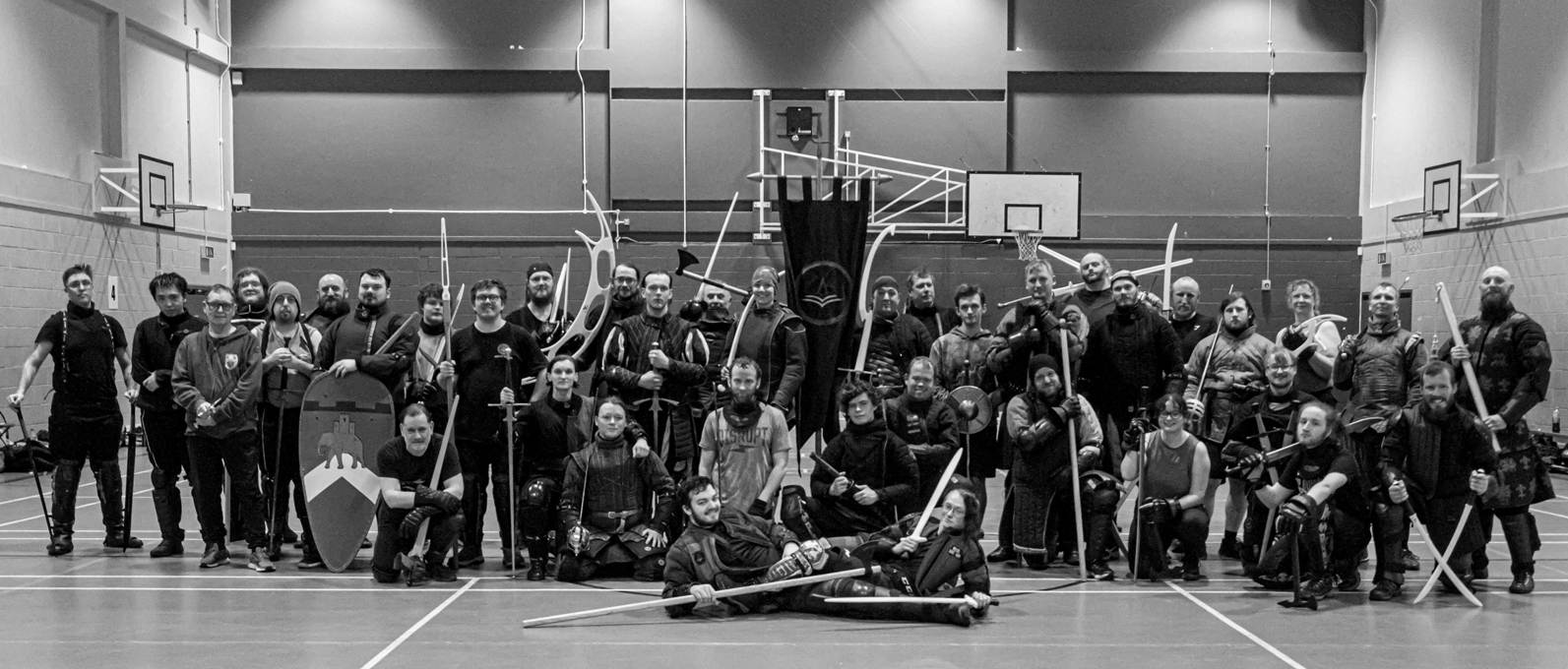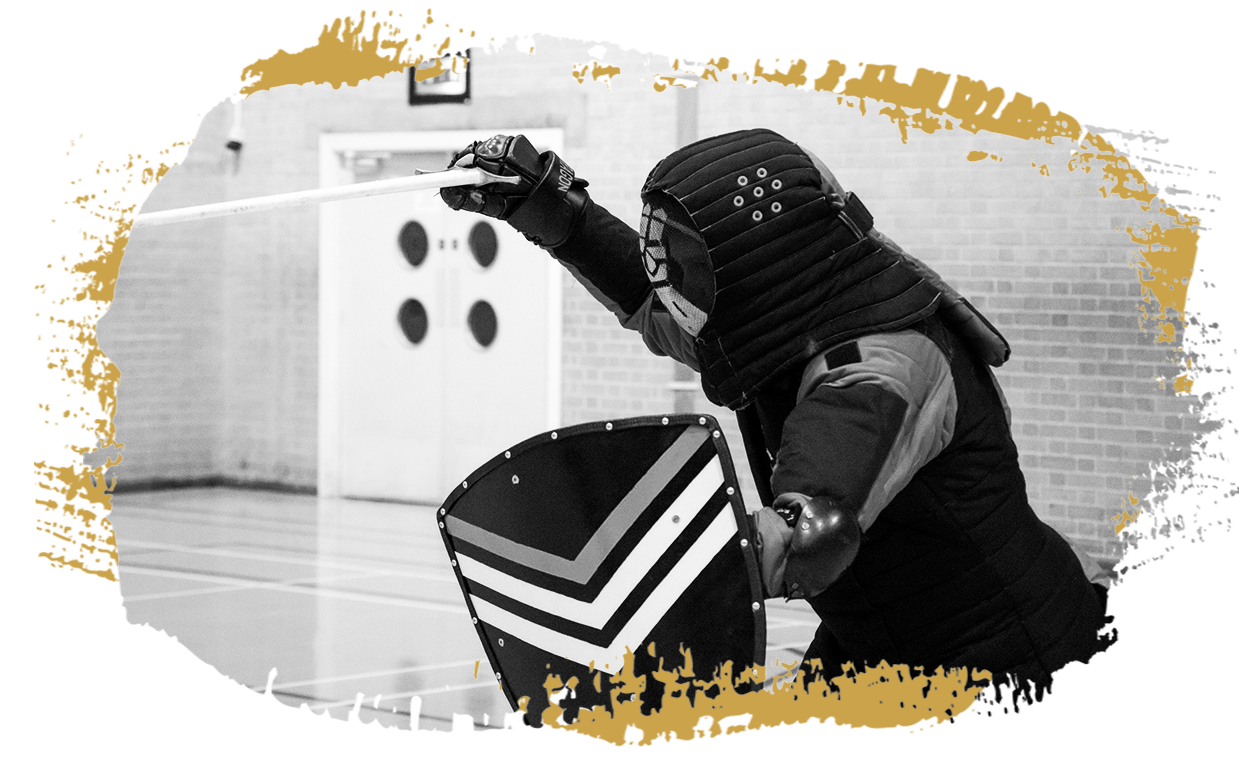The first interesting point, which I will bring up in another blog post, was that the system of Shastar Vidya is first and foremost, a battlefield practice, with duelling being considered in the higher tiers of practice for the style. This is at odds with a typical Historical Fencing environment, where duelling is the primary consideration and battlefield is not given as much airtime in many HEMA practices.
This produces a very different training basis for the style, and the first action was one which I found particularly interesting. Even the terminology used by Asante was interesting enough, calling this a study of the “geometry of combat”, a terminology which became very obvious when the drills were described.
The first drill was simply handling a weapon placed at your gut level and how to work around it. You couldn’t simply move to the side, otherwise the blade would track and you’d be stepping out of formation. Similarly, trying any action with a weapon that close would result in a wound. Thus the drill was to draw back slightly to void the weapon, whilst simultaneously shearing one side of the body past the blade to effectively deflect the attack and jar the upper arm. This drill was about building a standard response to danger that is both compatible with formation fighting and makes maximal use of armour to both encourage deflection and check* the opponents body or arms to reduce striking / follow through power power.
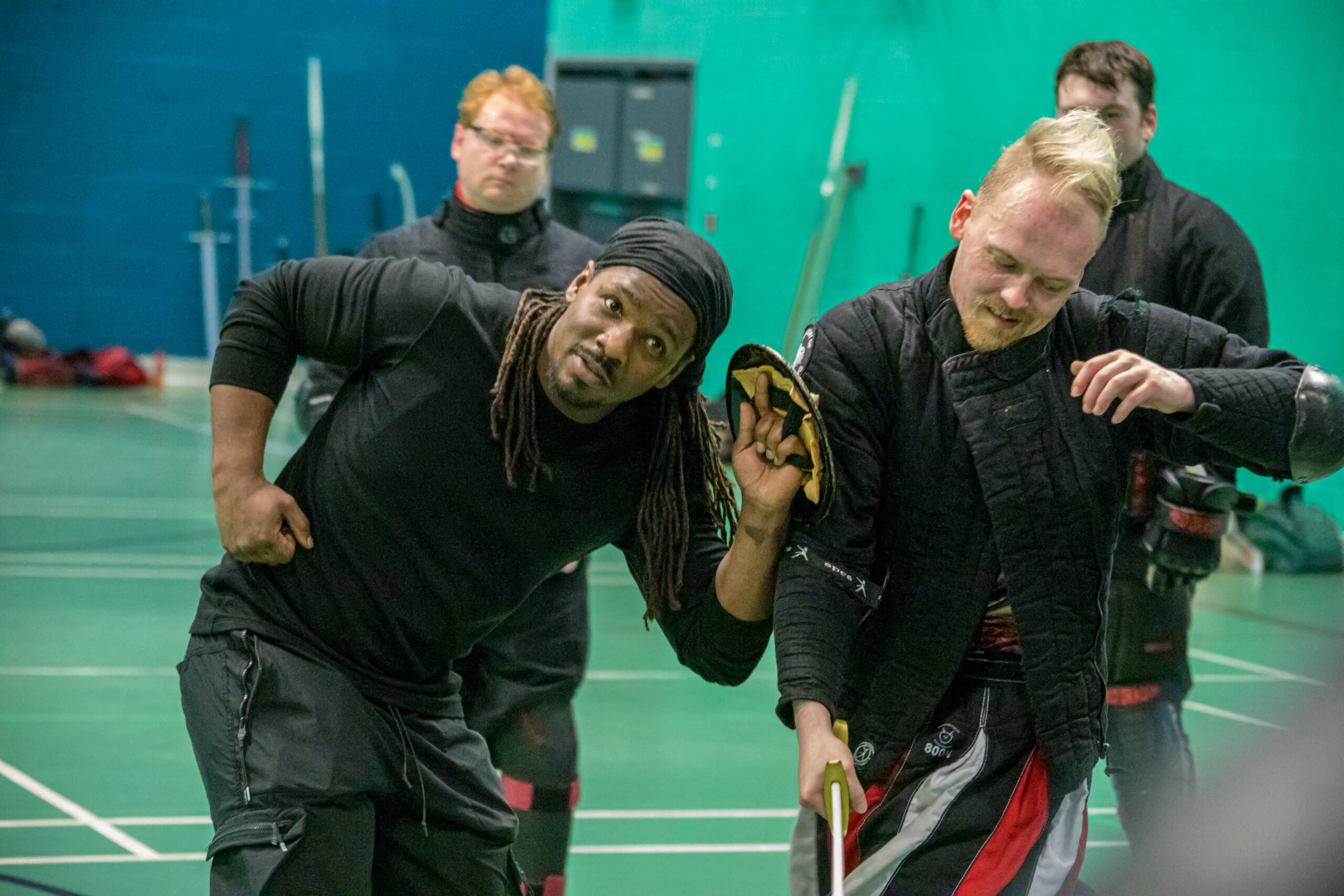
This drill was representative of a principle, in reality you may need to void other parts of the body, depending on the strike the opponent is making. No matter the scenario, the action should be paired with an immediate “shearing” pressure against the weapon arm for safety and control in close range.
This was an interesting drill in itself as it provided two mechanisms working simultaneously in a unique manner to overcome the problem, and expressed more of an emphasis on the avoidance and suppression of an opponent’s action, rather than meeting it head on with a block or parry against the weapon. This really highlights the fundamental difference in the system compared to more HEMA sources and can be seen in the further drills undertaken within the seminar.
The second drill focused around the use of a buckler and positioning it against incoming attack, such that it limits an opponent’s options for immediate follow up strikes without additional movement of their body. Thus creating a window of opportunity for a cleaner counter or disengagement during their repositioning movement. The important difference with this drill in comparison to many duelling actions, was that the attacker would now come in at angles other than directly in front of you, i.e. from one of your flanks or even completely side on.
This served to simulate the battlefield skirmish environment where the attacks can come from multiple directions and gave us an insight into the geometry of combat that Asante mentions. Where most HEMA buckler practices would try to pin the attack away from the centreline, this can leave the opposite flank exposed to a quick strike and be detrimental against well timed feints. In this practice, the defence was placed so that the buckler obscured the secondary attack angle without the need to move the buckler. This drill was all about developing an intuition for angles of attack, especially useful when considering the diverse angles of attack present on the battlefield.
This was interesting to see in play, the effect being that many used to more European styles would overshoot the mark, not by much but enough to notice the difference from the attackers perspective. For many attending, the focus was on trying to actively counter the attacker, not the threat they posed. This defence was presented as more of a passive positioning skill, which would make sense whilst dealing with another opponent, or moving through the skirmish, where multiple attackers stretch attentional resources. Being able to place a defence such that an attacker can be delayed even for a brief window, whilst passively creating windows of opportunity, allow for a more fluid engaging / disengaging style compatible with skirmishing.
The third drill was another example of combative geometry, the concept of pinning. This exercise combined both elements of the previous drills to gain positional advantage. Pressure against the attack and disrupting the angles of approach. The diagram below provided by Asante shows the concept in more detail and a simple application. Please note that the diagram has exaggerated angles and simplified movements to demonstrate the principle rather than represent actual technique.
The drill required the attacker to determine and eventually force a safer angle of approach using positioning. Much like the buckler drill, but now looking at the whole body as the variable and incorporating the angle of approach as opposed to just the weapon and buckler positions.
The idea was for the attacker to bisect the defenders turning capacity, to force a larger readjustment to the attackers approach. Failure to do so, would result in the attacker leaving one of their flanks open to immediate counter attack. Once the attacker had a feel for the angle, the idea was to incorporate a kind of “juke” into a front-on approach, much like you see in a rugby game whereby the attacker steps offline during the approach, before fluidly cutting back in. This gave the attacker a higher degree of safety to either follow up with their own attack or simply cover their angles whilst stepping past.
The offline step was paired with positioning the blade such that it guarded against the opponent’s weapon sweeping across, whilst maintaining a level of threat. Similarly, if the defender did manage to slip the threat and tey to flank, we use the calculated cutting back step to capture the vacated space without losing that ability to maintain the threat.
This can be tricky to identify in practice, much like with the position required by the buckler in the second drill, but the focus here being primarily on presenting a credible threat. If the attackers’ weapon and body are correctly positioned with the correct timing, the risk to the defender trying to counter-strike will be high, whilst repositioning would potentially leave them open to being pressed back or flanked.
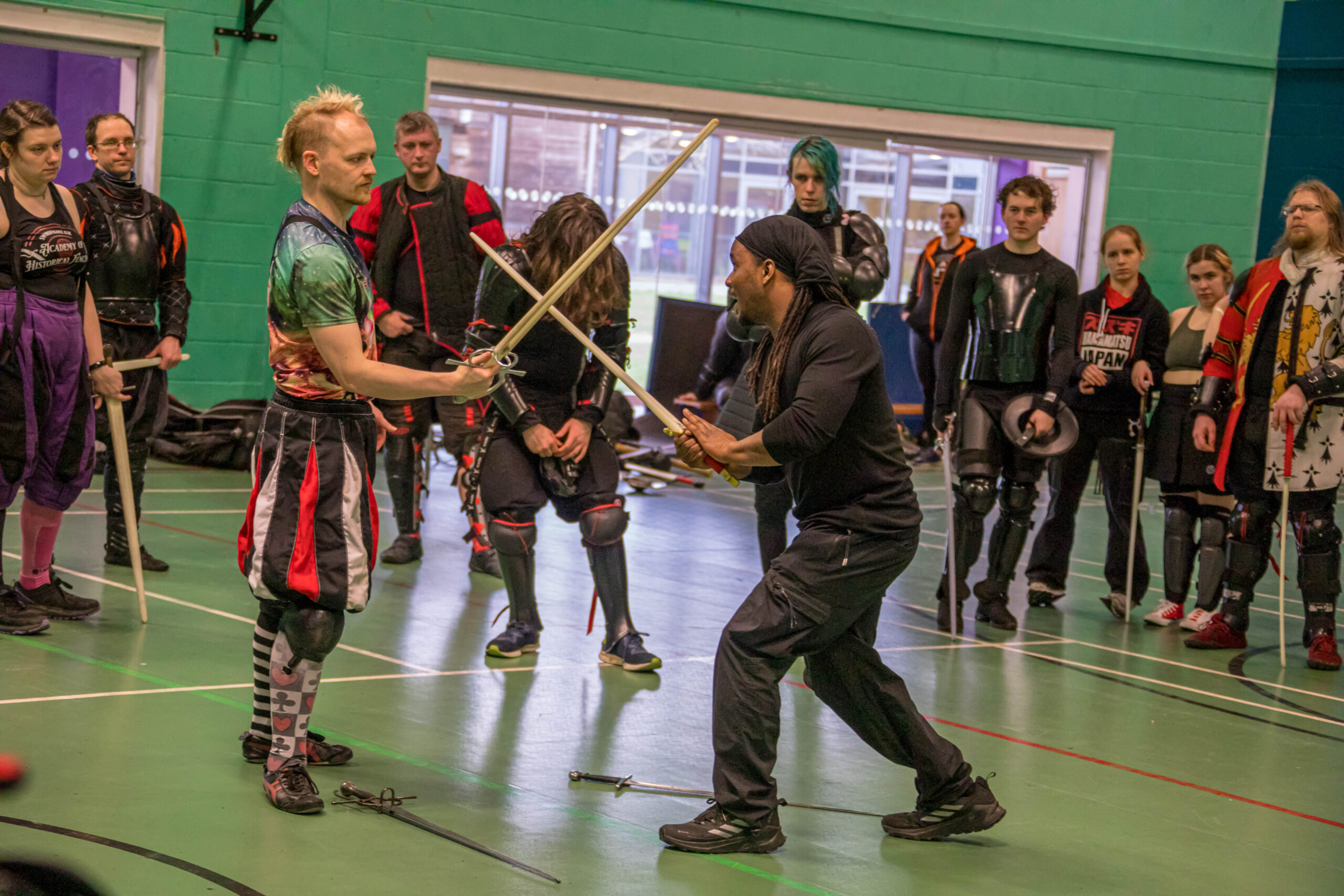
It was really easy to push the sword too far over the pinning lines, which allowed the defender to simply move away without threat to them or immediately counter. The positioning of the weapon and body needed to be just so that the defender would intuitively recognise the awkwardness of the approach and feel at a disadvantage, degrading their ability to respond quickly and decisively.
This work of playing the angles of approach and maintaining physical and mental pressure offered an interesting perspective on historical combat, one that can be difficult to square against more direct approaches found in duelling arts. But the effect is that in an open skirmish battle, even this basic dive into the study of Shastar Vidya merits much deeper consideration and training.
